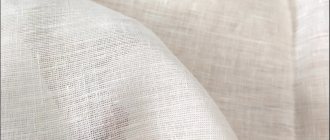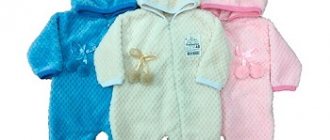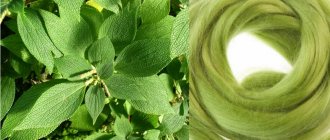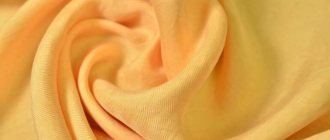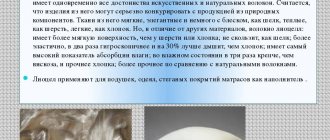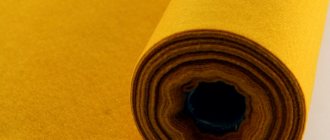Features of nettle fabric, as it is called
Nettle fabric is often called "ramie" after the type of plant from which it is made. But other varieties of crops are often used, thanks to which they obtain durable and beneficial fabric for the body. Read about the properties and use of stripe satin fabric here.
The production of this material is quite expensive. Therefore, it is quite expensive, but it has unique properties that other types of textiles do not have.
Composition and properties
When the phrase “nettle fabric” is uttered, many people associate it with a burning sensation. In fact, this matter does not have such properties, since unpleasant feelings can only be provoked by needles on the surface of the leaves and stem of the crop. And to create ramie, only the fibrous part inside the stem is used. This material will tell you what satin jacquard fabric is made from.
After the resulting parts are processed, they acquire a pure white color and a glossy surface. Due to this, the fabrics obtained from such threads resemble real silk (twill). But such product options are quite expensive due to the labor-intensive process of obtaining high-quality fibers.
Nettle textiles gained popularity in the 1980s, when it became fashionable to use environmentally friendly materials for clothing production.
Advantages and disadvantages
Differs in the following parameters:
- increased strength, unlike Lyon fabric, which increases if the material gets wet;
- absorbs dirt and moisture well;
- has antibacterial properties;
- dries quickly;
- resistant to rotting and exposure to insects and microorganisms;
- immune to alkaline and chemical influences;
- does not shrink;
- temperature resistant;
- not electrified;
- Easy to paint and retains color.
Clothes made from nettle have an attractive, glossy shine.
But like other natural fibers, nettle also has certain disadvantages:
- creasing;
- low abrasion resistance;
- rigidity;
- low elasticity;
- high cost;
- fragility.
The price is now quite expensive due to the difficulties of producing such materials. Processing is carried out primarily by hand. Therefore, finding textiles from this plant today is quite difficult. Read about furniture fabrics from Arben in this article.
Natural fiber production and manufacturing
Production begins with the collection of the plant itself. To do this, the stems are cut off almost at the very root during the flowering period. This is done manually so as not to damage the core, which is removed after cutting. The received materials then go through the following stages:
- Drying raw materials.
- Removal of resins using chemical or biological methods.
- Next, the fibers are crushed, scuffed and carded.
- After the finest fibers are obtained, the creation of threads begins, and from them - fabric.
When processing the internal parts of the stem, a silky and thin fiber is obtained, 120-500 mm long.
To this day, nettle fabrics are made by hand from start to finish by many supporters of environmentally friendly production.
Ramie plant from which yarn is obtained
The Ramie plant grows mainly in Japan and China, as well as in the Asian mainland in general. But in the Slavic expanses you can only find a dioecious culture, which produces a mostly dense and slightly rough fabric.
Ramie is a branched perennial plant whose lifespan can reach 20 years. The height of the stems can reach two meters, and cutting is done up to six times a year. The main supplier of raw materials and products made from them is China. India, the Philippines, Indonesia, and South America produce slightly less. This link will tell you about Blakit's bed linen.
In Korea they even hold a festival dedicated to Rami. It brings together the world's leading designers, and also hosts a fair with products from this culture.
Making nettle fabric with your own hands
Now it's time to start the practical part of our work!
- Preparation of nettles.
- Fiber processing.
- Receiving yarn.
- Fabric making.
Before setting off to harvest autumn nettles, we decided to negotiate with our “Technical Support”.
We can't do it without help! Having discussed all possible options with us, our assistant and support Tolya, under the leadership of Anatoly Vladimirovich, began his difficult task - making devices for processing fibers and weaving. How grateful we are to them! Technical support
It was decided to make, based on drawings, photos and descriptions from the Internet, a small loom and a device for processing trust - a wood grinder. We were wondering how people coped with this work (obtaining fabric) in ancient times.
To begin with, technical drawings of the products were worked out. And then materials, tools and devices are prepared.
Materials
- Beam 50x50x2500
- Stud with thread on both sides and nuts
- Plywood 5 mm and 3 mm thickness
- Pine board 25x250x400
- Self-tapping screws for wood
- Wood screws 3.5
Tools
- Sander
- Electric jigsaw
- Hacksaw
- Screwdriver
- Drill
- Angle grinder (small)
- Wood cutters
- Wood lathe STD-120M
- Roulette
- Pencil, compass, eraser,
- Construction corner
- Crafting table
- Wood drills
- A circular saw
- Awl
- Metal cutting disc
- Sandpaper
Initially, the production of a loom was ordered, but in the process of working on the project, the girls had a problem with processing the trust - they needed a hammer.
Scope of application: what is sewn from fabric
Used for sewing and manufacturing:
- household products - bags, ropes, etc.;
- dresses;
- blouses, shirts;
- trousers, skirts;
- jackets, blazers;
- towels, bedding.
Since the wear resistance of ramie fibers is low and fragility is high, the raw material is mainly used in fabrics of mixed composition to improve the properties of products. Read about the composition of capitonium fabric here.
Interestingly, nettle fibers are also used in the creation of filters, cleaning devices, ropes, and paper. Some countries use the material to create banknotes.
Recommendations for caring for the material
Nettle fabrics are easily tolerated:
- dry dry cleaning;
- machine washable;
- ironing;
- whitening;
- digestion and other types of exposure.
So, due to the increased fragility of the fibers, things from this plant should be dried and stored in a horizontal position, avoiding folds and creases.
But like other options for natural fabrics - such as bamboo fiber and hemp fabric, nettle also has disadvantages that you need to be aware of.
If the fabric is mixed, then when caring, you should follow the manufacturer’s recommendations indicated on the label.
Video
Watch the video to see how nettle fabric is made:
conclusions
So, what is worth knowing about nettle fabric:
- From the dioecious plant variety, fairly strong, but rough, tough, natal tissue is obtained.
- Elite fabrics are made from ramie.
- Due to increased fragility and abrasion, the service life of things of this type is somewhat lower than that of other materials.
- Antiseptic properties will be useful for allergy sufferers, as well as people who suffer from hyperhidrosis.
- Ramie is easy to care for, but requires certain storage conditions.
- Nettle material is quite expensive, but it is an environmentally friendly plant tissue.
- Most of this type of textile is produced in China.
Fabrics made from ramie (ramie, Chinese nettle), nettle fabrics
This section of our online store presents fabrics made from ramie (Chinese nettle), nettle fabrics.
We hope that in our assortment you will find something interesting for yourself!
All fabrics are in stock in Moscow!
Dear customers, please pay attention to the following points:
1. Fabric colors may vary slightly from batch to batch!!!
Also, prices for this or that fabric may change from batch to batch!
2. If after your order there is 1 meter of fabric left, it will automatically be added to your order. (If you ordered 2 meters of fabric, and I have 3 left, then I will only sell you 3 meters of fabric).
3. There is no table for cutting fabrics in the warehouse. The cutting accuracy is within + 10 cm. Please take this into account! In any case, the cut piece will be re-measured and you will be invoiced with the exact length! The overall measurement accuracy will be within +3 cm.
4. The piece can be cut “a little” askew! 
5. Based on points 4 and 3, as of today (10/19/2019), the maximum length of a piece of fabric that I can cut is 2 m. That is, if you ordered 4 meters, then they will sell you 4 meters in two pieces of 2 meters each!
If you really need it, ASK, I’ll try to cut 3 meters in one piece. I'm not sure about 4 meters.
6. I cut fabrics only on weekends. They will cut once every 2 weeks (possibly more often)!
7. Fabrics are bought in small batches; there is no “nailed nameplate” on the fabrics, therefore, we will assume that nettle fabrics do not have any certificates (GOTS, SGS, OEKO-TEX, GOST).
8. Most fabrics (especially “light fabrics”) are not desizing (not washed)!
9. All ramie fabrics are industrially produced, about 150 cm wide. Shrinkage is 2-3%.
10. If you need fabric samples, buy 1 meter at a time.
11. If you are going to sew from several colors of ramie, wash it first! The fabric may fade during the first wash!
12. According to the Decree of the Government of the Russian Federation of January 19, 1998 N 55 (as amended on January 28, 2019) “On approval of the Rules for the sale of certain types of goods...” textile goods (cotton, linen, silk, wool and synthetic fabrics, goods made from non-woven materials such as fabrics - ribbons, braid, lace and others); other goods sold by the meter are NOT SUBJECT TO EXCHANGE AND RETURN!
13. In most cases, the photo was taken with or without flash. Photos can also be taken with different cameras!
14. A roll of fabric / knitwear can consist of several flaps (parts). See point 2.
15. We “think” less, ask more!
16. I probably forgot something else. It will become clear in the process - I’ll add it!
Sincerely,
GSN-YARN online store team
